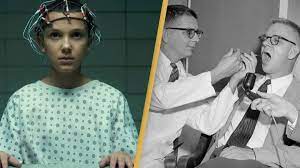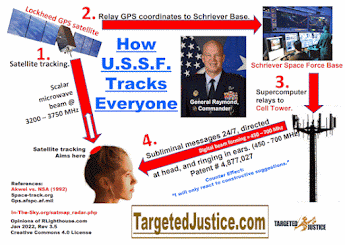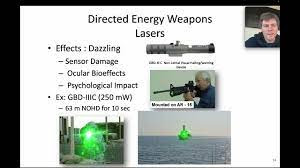Patent No. 5023783 Evoked response audiometer for testing sleeping subjects
Patent No. 5023783
Evoked response audiometer for testing sleeping subjects (Cohen, et al., Jun 11, 1991)
Abstract
An evoked response audiometer for sleeping subjects comprising a function generator for supplying to a sleeping patient an auditory signal consisting of a carrier frequency which is periodically modulated at frequencies in excess of 60 Hz, the frequency of modulation being varied in a generally increasing manner for auditory signals of higher frequencies such that the stimulus is frequency specific, a detector for sampling and analyzing brain potentials evoked by said signal, a low-pass filter providing a time window which samples the brain potentials for a predetermined interval to provide sets of fourier analysis samples containing amplitude and phase data in narrow bands centered on the modulation frequency and its second harmonic, a computer for analyzing the Fourier analysis samples to extract means values of the amplitudes and phase angles of the signals, and for extracting from the means values of the phase angles the probabilities that the distributions of the phase angles could have occurred by change, whereby the existence of phase locking of the brain potential signals can be determined.
Notes:
Evoked response audiometer for testing sleeping subjects. Filed June 1990, granted June 1991. Shows monitoring capability while sleeping. Says can use sound to cause evoked potentials while someone is sleeping. (Falling asleep with radio or television on is not a good idea). This type of thing could be used early in the attacks to get some evoked responses to use for other attacks.
SUMMARY OF INVENTION AND OBJECTS
It is therefore an object of the present invention to provide an improved evoked
response audiometer which will make use of the optimum modulation frequencies
for steady-state evoked potential testing during sleep, to allow the efficient
assessment of hearing of a variety of difficult-to-test patients. These include
neonates, infants, young children and mentally retarded patients
The invention provides an evoked response audiometer comprising means of supplying
to the patient an auditory signal consisting of a carrier frequency which is
periodically modulated (for example amplitude modulation, frequently repeating
tone bursts or tone pips, frequency modulation or beats) such that the stimulus
is at least substantially frequency specific, said auditory signal being presented
for a sufficiently extended period of time to enable phase-locked steady-state
potentials to be evoked in the brain, means for sampling the brain potential
signals evoked by said signal, and means for analysing said brain potentials
to determine whether phase-locking of said brain potentials to the modulated
auditory signal has occurred, said auditory signal means being controlled so
that said auditory signals are periodically modulated at frequencies in excess
of 60 Hz, the frequency of modulation being varied in a generally increasing
manner for auditory signals of higher frequencies.
In a preferred form, said frequency of modulation is about 60-115 Hz for auditory
signals having frequencies less than or equal to 1.5 kHz, and said frequency
of modulation is about 65-200 Hz (or more) for auditory signals having frequencies
in excess of 1.5 kHz.
It should be appreciated that the modulation frequency used will depend on the
frequency of the auditory signal as well as on the subject being tested As an
indication of the range of modulation frequencies which may be used, the following
table is provided:
______________________________________ Auditory Signal Modulation Frequency
______________________________________ (a) Normal sleeping neonates 500 Hz:
about 60-140 Hz, preferably 65-95 Hz, and most preferably about 72 Hz 1.5 kHz:
about 60-165 Hz, preferably 75-110 Hz, and most preferably about 85 Hz 4 kHz:
about 65-200 + Hz, preferably 85-110 Hz, and most preferably about 97 Hz Hence,
60-165 Hz for CF < 1.5 kHz 65-200 + Hz for CF > 1.5 kHz (b) Normal sleeping
adults 250 Hz: about 70-130 Hz, preferably about 80-115 Hz, and most preferably
about 85-95 Hz 500 Hz: about 70-180 Hz, preferably about 80-115 Hz, and most
preferably about 85-95 Hz 1 kHz: about 70-200 Hz, preferably about 80-115 Hz,
and most preferably about 95 Hz 2 kHz: about 75-200 + Hz, preferably about 85-195
Hz, and most preferably about 105-160 Hz 4 kHz: about 75-200 + Hz, preferably
about 85-200 + Hz, and most preferably about 120-190 Hz Hence, 70-180 Hz for
CF < 1 kHz 75-200 + Hz for CF > 1 kHz ______________________________________
It is expected that as infants mature, their responses will become more like
those of adults. Accordingly, there will be a shift of optimum MF ranges.
Thus other modulating frequencies will be determined experimentally for other
types of patients.
The use of modulation frequencies in excess of 60 Hz to evoke the responses
allows the most efficient detection of a response in the type of patient being
tested and at the carrier frequency being used. The system may be designed to
choose the optimum modulation frequency automatically, based on the type of
subject and the carrier frequency used. The audiometer embodying the present
invention has the advantage over prior art audiometers in that it may make use
of the widest possible range of modulation types (limited only by the requirement
of reasonable frequency specificity), in that it makes use of the modulation
frequencies that allow most efficient detection of a response during sleep (namely
those in excess of 60 Hz) and that it employs a frequency specific stimulus.
It also detects a response In real-time enabling the transfer to a new stimulus
automatically.
The brain potentials are preferably recorded by means of electrodes on the vertex
or forehand and on the mastoids of the patient, in the preferred embodiment,
the patient is presented with a band limited tone burst or a tone that is simultaneously
amplitude and frequency modulated or an amplitude modulated tone. The EEG signal
is Fourier analysed to extract the components at the modulation frequency and
its second harmonic, as these have been found to be the predominant components
of the response. The use of low-pass filters following the multiplication of
the EEG signal by the modulation frequency waveform and its second harmonic
provides a time "window" which samples the EEG waveform for an interval of,
typically, 64 periods of the modulation waveform. The filters are sampled twice
every such interval (that is, typically, once every 32 modulation periods) resulting
in a set of samples, each of which contains measurements of amplitude and phase
of the EEG components present in very narrow frequency bands centered on the
modulation frequency and its second harmonic. The phase measurements are made
relative to the modulation frequency envelope.
The sets of samples are analysed to provide mean amplitudes, mean phases and
probabilities that the distributions of the angles of the samples could have
occurred by chance (i.e. in the absence of a phase-locked response). The said
probabilities enable the system to decide in real-time whether a response is
present. As the system is able to vary both the loudness and the carrier frequency
of the auditory signal presented to the patient, it allows objective testing
of hearing, which may be performed automatically.





Comments